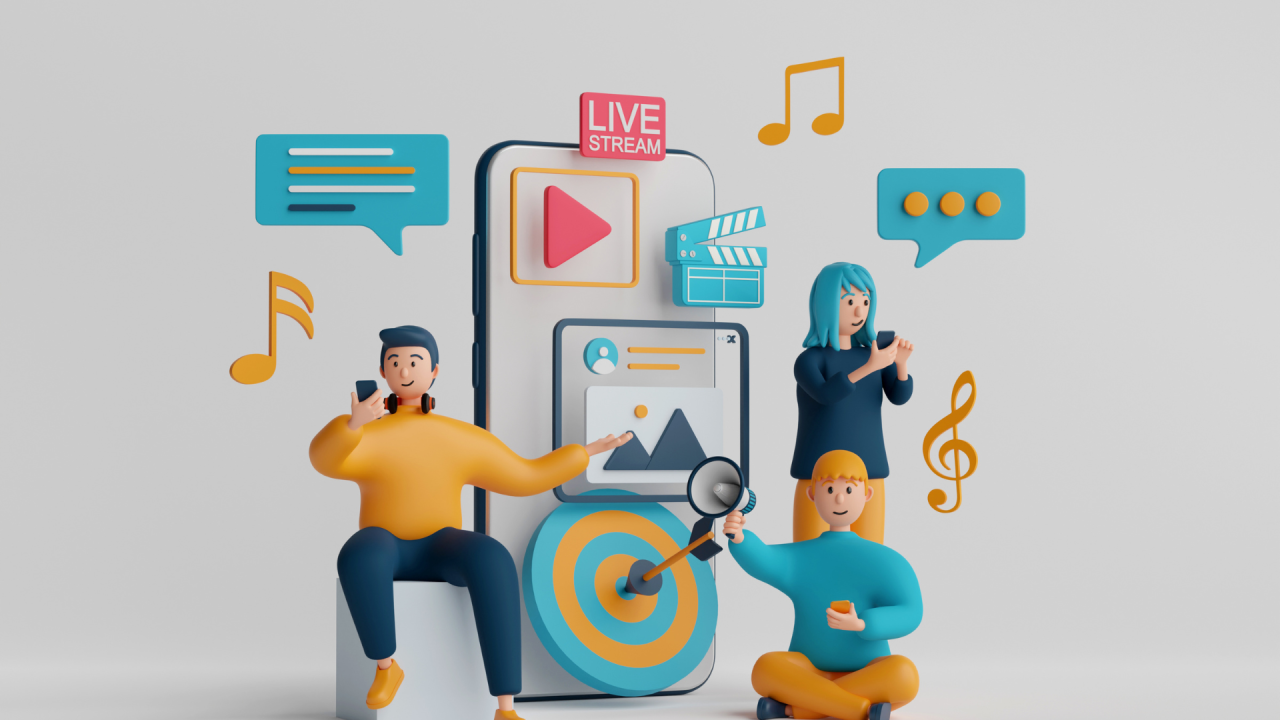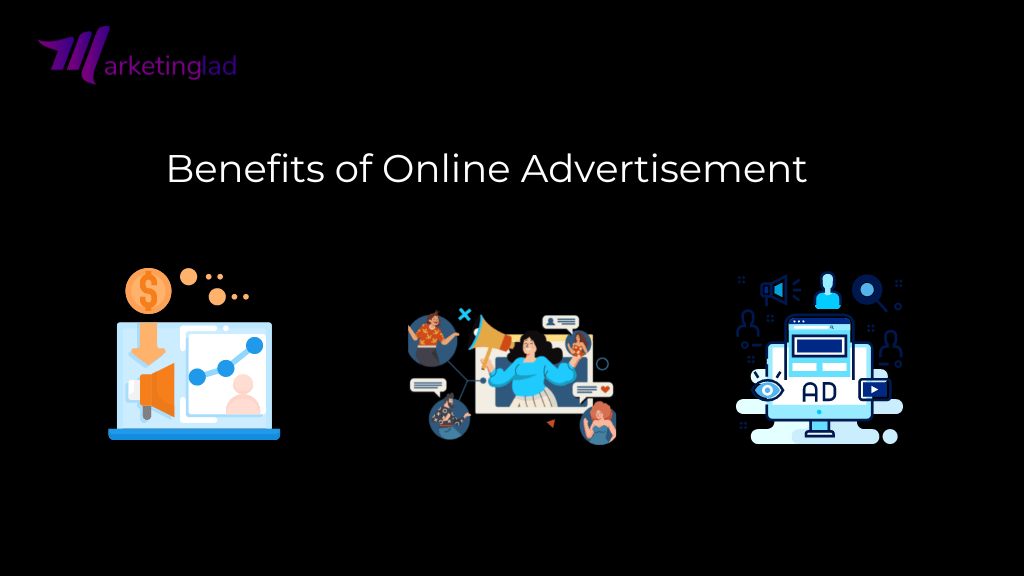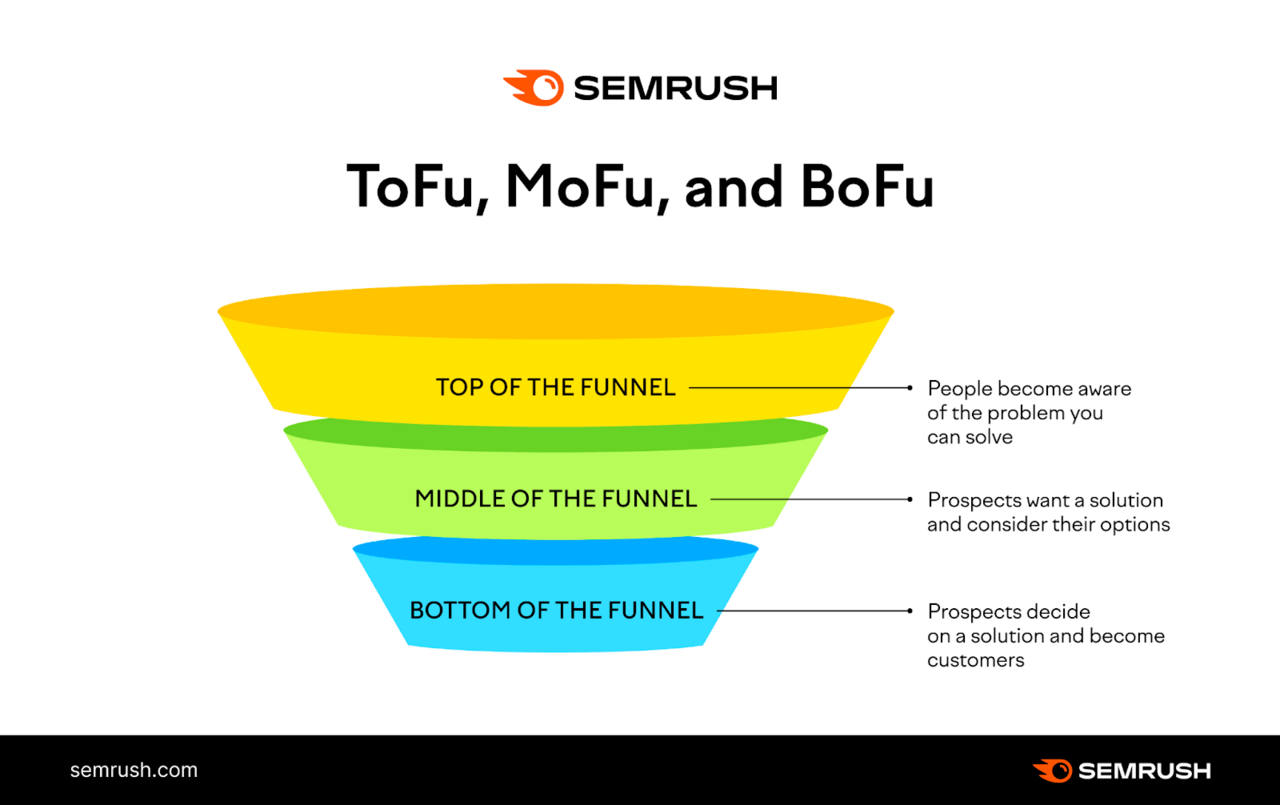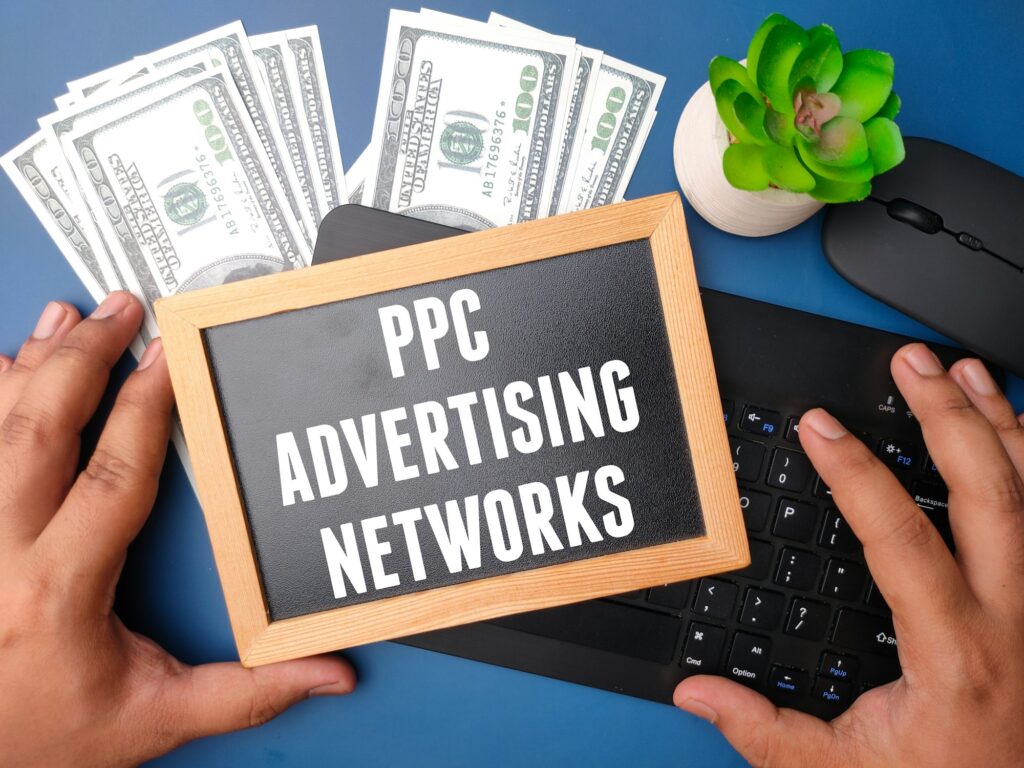
In 2025, digital marketing is the main driver of business expansion. Businesses cannot just depend on traditional methods of marketing as the consumers are spending most of their time on digital devices. In fact, to grab the attention of the audience, create brand loyalty, and even make the users buy require nowadays an in-depth understanding of online strategies and platforms.
This guide provides the perfect beginner’s journey from start to finish. It tutors the learners on the basics, the execution of the marketing strategies, and the result of the optimization. The ultimate guide is your weapon if you want to update your marketing skills, be a part of a professional team or work at a digital marketing agency, or even open your business venture.
Table of Contents
Toggle1. Understanding the Digital Marketing Landscape
In a nutshell, online marketing is all about connecting with audiences through the use of the web. Basically this means the use of search engines, social media, websites, apps, emails, and online advertisements. In contrast to traditional advertising, online methods provide monitoring in real-time, precision in targeting, and extendibility of reach.
Why Online Strategies Matter
There are necessary online promotional measures due to the following trends:
Shift in Consumer Habits: Ones looking for products or services mostly do it online now, by researching, comparing, and purchasing.
Global Reach: A single campaign can deliver the message to the audience from all over the world.
Data-Driven Decisions: Each interaction is recorded leading to a better optimization of the promotional efforts by marketers.
AI and Automation: Current instruments free the user from doing monotonous tasks, help in the customization of the customer’s journey, and make educated guesses on their operations.
Knowing this environment is the first step to successfully moving through it.
2. Benefits of Online Promotion

2.1 Global Reach and Scalability
Several online tools offer reaching a few different countries at the same time. Taking a instagarm campaign as an example, how can a fash ion brand from India open the doors of the US, Europe, and Australia markets with the same strategy? An essential step of this process is paid targeting which offers that only people with relevant interests get to see the campaigns.
2.2 Cost-Effective Strategies
The cost of online promotion is much lower as compared to that of ill the machine that is the television or that of the printed ones. The lowered budget requirements make it possible for small businesses to conduct a highly targeted campaign with a minimal investment. A sure mechanism to assign your ad budget only to potential buyers is retargeting.
2.3 Precise Targeting
Google Ads and Meta platforms, for example, enable very detailed targeting:
Demographics (age, gender, location)
Interests and hobbies
Browsing behavior and purchase history
Device type and online activity
Theom precisions guarantee that marketing campaigns will reach those people who are most likely to react and convert.
2.4 Real-Time Tracking
Tools for analysis keep an eye on every metric, such as:
Click-through rate (CTR)
Impressions and reach
Engagement metrics (likes, shares, comments)
Conversions, sales, or leads
Bounce rate
With real-time tracking, marketers facilitate instantaneous modifications in their tactics to enhance the effectiveness of their campaigns.
2.5 Enhanced Customer Engagement
Participation in activities, such as voting, quizzes, live streams, or chats, can be an efficient method for firms to establish direct communication with their customers. To illustrate, Instagram Stories enable brands to have an instant interaction with users, thus not only gaining their trust but also their loyalty for a long run.
2.6 Flexibility and Adaptability
Campaigns can be changed, stopped, or enhanced in no time. Adjusting the messaging, creative or targeting on the basis of analytics is something you can do with print ads or TV commercials.
2.7 Measurable ROI
It is possible to measure every marketing campaign’s effectiveness, thus resulting in an evaluation of profitability that is much easier to conduct. As an illustration, an online shop can explicitly connect the money spent on promotion with the conversions on sales, thereby making the process more efficient.
3. The Buyer’s Journey

It is understanding this transition that lies at the very core of successful digital marketing. Each individual goes through three phases, and your content should be the guide that takes them through those phases in a stepwise manner.
Awareness Stage (Top of Funnel)
Individuals recognize that they have some problem but are clueless about the solutions. The main purpose of this stage is to be visible.
Attracting people with useful blogs, short videos, infographics, and other instructional-material would be the best approach here. Other interest builders are webinars, podcasts, and well-designed posts.
Example:
The skincare company could provide helpful tips for the reduction of acne or even detecting the use of harmful chemicals that allow new customers to find them in an easy and natural way.
Consideration Stage (Middle of Funnel)
Where are people now, but at the stage of comparing options and looking for sources from which to derive information?
Working with the help of case studies, testimonials, comparison articles, guides, nurturing emails, and product demos, customers can make the right decision. Retargeting is helpful in that it is a reminder of your brand amid other alternatives.
Example:
A software company might use a short email series or a comparison video to demonstrate how its features are different from those of the competitors.
Decision Stage (Bottom of Funnel)
People already want to make the choice, what they are in need of is only reassurance.
The next step in the journey is facilitated by tactics such as free trials, consultations, limited-time offers, strong CTAs, and authentic success stories.
Example:
An online learning platform could pair a limited trial with live Q&A support to get rid of the hesitations and shorten the decision time.
4. Online vs. Offline Marketing

Each of the two (online and offline) methods has its benefits and a place in the world of modern marketing but is used for different purposes.
Online Channels
Along with search platforms, social networks, emails, and websites services allow the targeting to be done more accurately and the results to be measurable. The changes of the campaigns could be done in real-time, and the costs for the campaigns could be removed entirely.
Offline Channels
Although the media types such as print ads, billboards, radio, TV, and local events provide an extensive outreach, they mainly work in trust building of long term relationships and hence support a certain region or community.
2025 Trend
The major portion of businesses today employs both approaches simultaneously; on the one hand, online channels stand for speed and performance data while, on the other hand, offline exposure is responsible for brand familiarity. Thus, they jointly produce a complete presence that attracts audiences wherever they decide to spend their time.
Step-by-Step Action Plan
Step 1: Understand Core Channels
Search Engine Optimization (SEO):
By utilizing the appropriate keywords, interlinking the site, producing meta titles, employing structured content, and attracting quality backlinks, the sites will become more appealing to search engines. Make sure all your pages are quick-loading and that they work on mobile devices. Concentrate on producing content that genuinely has an effect, provides the answers to the real questions, and is consistent with the user’s search intent. Take into account technical aspects like sitemap generation, schema markup, and making the site easily navigable for that indexing can be done quickly by search engines. Link problems that don’t work, duplicate content, and all other issues that slow down your site can be fixed by conducting regular audits of your site. Don’t forget that SEO is a long-term strategy in which you might have to wait for quite some time before you get the results, but eventually, you will be able to get a stable flow of organic traffic in the long run.
Content Marketing:
Create material for the blog, videos, infographics, and guides, etc. The right content has the potential to attract visitors, educate users, and increase leads. Use storytelling, real-life examples, and active tips. The main aim should be to involve your readers and not only to get their email. It is good to have a regular publishing schedule as it helps to build authority and trust. Although you may create great content, be creative with how it is delivered since the ways can be different. You can accomplish this by utilizing how-to guides, listicles, tutorials, case studies, and the rest is limitless. As you keep the content consistent, share it through different channels. Metrics should be measured for performance, average time on the page, social shares, etc., for any conversion actions. Perfect content should not just educate but also establish and facilitate trust and loyalty.
Social Media:
Different social media structures cater to distinct demographics and feature various varieties of engagement:
- Instagram for life-style, aesthetics, and visually attractive content
- LinkedIn for sharing expert insights, setting up idea leadership, and B2B networking
- TikTok for creating short, engaging, and without difficulty shareable movies
You can be shifting toward a content calendar, as a way to preserve up with a publishing time table that is not interrupted, and ensure that your fans are interacting with you thru feedback, tales, and polls. You ought to be scrutinizing your engagement developments, while posts are resonating together with your target audience, and height posting instances and target audience hobbies.
Employ person-generated content and collaborative content material to advantage the self belief of your goal marketplace. Social media, being less of a published, is greater about the interaction you have got along with your target audience that is constructing relationships.
Paid Ads:
Run campaigns on Google, Meta, YouTube, and distinctive relevant structures. Ensure unique targeting thru target audience demographics, pursuits, and conduct. Craft compelling advert duplicate, use exceptional visuals, and check multiple versions to determine which combination plays remarkable. Set clean desires, budgets, and KPIs for every advertising campaign. Monitor impressions, clicks, conversions, and ROI every day, and adjust bidding strategies and creatives as wanted. Paid classified ads can generate immediately consequences, but ongoing trying out and optimization are crucial for sustained effectiveness.
Email Marketing:
Create computerized workflows for welcome emails, abandoned cart reminders, and custom designed offers. Segment audiences based totally on conduct, selections, or buy facts for better relevance. Use catchy trouble lines, concise messaging, and clean calls-to-motion. Test unique electronic mail formats, timings, and personalization strategies. Analyze open fees, click on-thru charges, conversions, and unsubscribe costs to refine campaigns. Email remains one of the maximum ROI channels even as finished thoughtfully and always.
Step 2: Choose Your Focus
Analyze Competitors: Study opposition’ campaigns to apprehend which channels, content fabric material sorts, and advert formats are strolling efficiently. Look for gaps of their technique that you could leverage.
Audience Research: Map out in which your ideal clients spend their time, the form of content fabric they eat, and the way they interact with producers. Use surveys, social listening, and analytics for insights.
Business Nature: Product- or visible-heavy groups thrive on Instagram and Pinterest, at the same time as provider-based totally companies perform better on search engines like google and LinkedIn. Consider your goal marketplace’s buy adventure on the same time as choosing channels.
Start Small: Focus on one number one and one secondary channel to collect deep information earlier than increasing. Avoid spreading belongings too skinny initially.
Example: A apparel emblem may additionally moreover furthermore start with Instagram and TikTok to collect seen attraction and engagement, even as a regulation organisation specializes in Google seek and LinkedIn to capture certified leads. Consistency and experimentation within the ones channels permit slow optimization.
Step 3: Develop Necessary Skills
Copywriting & Messaging: The very first skill that you need to start building is the writing of persuasive and catching headlines, email subject lines, ad copies, and landing pages. These pieces of writing should not only raise the interest of the people but also lead them to the action you want. To facilitate the decision making of the readers use emotion triggers, storytelling, and active language.
- Customer Psychographics: If you want to know users, then you have to understand their motives, pain points, objections, etc. Knowing “why” people choose a certain option is very helpful in making the right targeted campaigns which, in turn, will bring about the desired action of people.
- Basic Graphic Design: Pick up some canva or Figma skills to help you create great and engaging visuals, infographics, and social media posts without the need to employ advanced design techniques.
- Analytics & KPIs: Initiate the development of the user-data reports that will illustrate: CTR, conversions, bounce rates, CPC, CPM, ROI, etc. After that, go ahead to use this data for the decision-making of your campaigns.
- SEO Basics: Be aware of the fundamental standards of the operation of search engines and then learn how to create and optimize content and structure by focusing on providing value to users.
Tip: Employ analytics to measure your creative-content campaigns’ performance, so that you can easily discover the factors to repeat for the greatest results. You are not able to perfect your skills without continuously testing and creating variations of your campaigns.
Step 4: Learn through certifications
Formal education will definitely make you more skilled in a shorter time:
- Google analytics and ads: You will learn how to segment the audience, analyze user behavior, create ads, and measure conversions. Being certified is a way to show up your experience to the next employers or clients.
- Semrush and ahrefs – These are powerful tools. You will learn to do competitor analysis, keyword research, link building, and SEO audits which are very actionable. Besides, you will be taught to rely on the data rather than your gut or assumptions.
- Hubspot – You will learn content strategy, CRM, email workflows, inbound marketing, and so on.
- LinkedIn Learning / Coursera – These are the platforms for online learning and they offer courses with a clear structure on topics such as analytics, brand marketing, advertising campaigns, and strategic planning.
Tip: Do certifications together with real-world implementation to support your learning and get experience at the same time.
Search Engine Optimization (SEO):
By utilizing the appropriate keywords, interlinking the site, producing meta titles, employing structured content, and attracting quality backlinks, the sites will become more appealing to search engines.
Make sure all your pages are quick-loading and that they work on mobile devices. Concentrate on producing content that genuinely has an effect, provides the answers to the real questions, and is consistent with the user’s search intent. Take into account technical aspects like sitemap generation, schema markup, and making the site easily navigable for that indexing can be done quickly by search engines. Link problems that don’t work, duplicate content, and all other issues that slow down your site can be fixed by conducting regular audits of your site.
Don’t forget that SEO is a long-term strategy in which you might have to wait for quite some time before you get the results, but eventually, you will be able to get a stable flow of organic traffic in the long run.
Content Marketing:
Create material for the blog, videos, infographics, and guides, etc. The right content has the potential to attract visitors, educate users, and increase leads. Use storytelling, real-life examples, and active tips. The main aim should be to involve your readers and not only to get their email. It is good to have a regular publishing schedule as it helps to build authority and trust. Although you may create great content, be creative with how it is delivered since the ways can be different.
You can accomplish this by utilizing how-to guides, listicles, tutorials, case studies, and the rest is limitless. As you keep the content consistent, share it through different channels. Metrics should be measured for performance, average time on the page, social shares, etc., for any conversion actions. Perfect content should not just educate but also establish and facilitate trust and loyalty.
Step 5: Build and launch campaigns
- Determine a campaign objective: Only one purpose of the campaign should be the focus. Awareness, engagement, conversions, or leads – which one of these will be the focus of your campaign? Knowing your campaign goal will assist you during the whole process and you will be able to measure it later.
- Audience profiling: Age, interests, behavior, location, and intent to buy, etc. should be considered while profiling an audience. The creation of an audience persona is the only way that leads to the exact target and that helps to match your message with the audience.
- Content Creation: Get going with content that is easy to comprehend, interesting and visually attractive. First, tell a story, then show the benefits, and last give the problem-solving answer..
- Launch & monitor: Keep track of the moments of your campaign through the days. It is necessary to have the capability to stop the running of bad-performing ads fast and that is how the budget will not be wasted.
- Optimization: Change your copy, visuals, targeting, test landing pages, and inspect the analytics at the end of the day. It is recommended to separate variables, and always perform A/B testing.
- Example: A fitness app could run Instagram ads to raise awareness, retarget users with free trial offers, and send follow-up emails, effectively converting leads into paying subscribers.
Step 6: Leverage Tools for Effectiveness
- Analytical Tools: Analyzing user behavior, conversions and metrics regarding website performance is possible with Google Analytics, GA4, and Hotjar.
- SEO Tools: Semrush and Ahrefs provide keyword research capabilities alongside a competitor audit tool, and next backlinks for taking the guesswork out of an SEO informed content strategy.
- Email Automation: HubSpot, Mailchimp, and Klaviyo allow for the easy editing of workflows that include welcome emails, abandoned cart sequences, product recommendations, or any other type of messaging that you use to nurture your audience.
- Social Scheduling: Buffer or Hootsuite provide easy-to-schedule posting of content while optimizing timing with multiple members to engage an audience!
- Collaboration: A professional team can show you and properly implement a campaign, which could even include scaling, with work developed by you in a collaborative way!
Step 7: Stay Current in Trends
- AI Personalization: Use AI to create personalized recommendations, product recommendations, email content or any type of messaging you use for your audience.
- Short Form Videos: Instagram Reels, TikTok, or Youtube Shorts will run a major run of your audience attention! Further, videos under a minute or even around 30 seconds, are more engaging than longer formats.
- Social Commerce: e.g. optimize content for Instagram store, Pinterest or Facebook shops for in-app purchases only to improve CTR.
- First-party data: for campaigns, data can be gleaned through CRM, emails, accounts and other privacy compliant measures.
- Voice Search Optimization: Content should be optimized for smart speaker/assistant voice search questions.
- Example: E-commerce brands using AI recommendation engines have revealed up to a 30% higher conversion rates and improved customer retention.
Step 8: Measurement and Optimization
Conversion Measurement: Measure purchases, sign-ups, downloads, form submissions, and other relevant measurements of success for a campaign.
- Cost Measurement: Analyze CPC, CPA and ROAS to make sure the campaigns are cost-effective and justifiable.
- Behavior Analysis: Identify user flow pain points through heatmaps, session recordings, and click measurements.
- Iterate: To optimize campaigns ongoing, use performance data, where possible. Develop tests against copy, visual, audience, landing pages, etc.
- Mini Case Study: An e-commerce store identified drop-offs at checkout, and through testing layouts, simplifying forms, and retargeting users, was able to convert 25% more in a month.
6. Working With A Professional Team

A professional team will give you value by:
- Strategic insight and execution of campaigns
- Advanced analytics/testing/optimizations
- Management and scaling of campaigns
For someone just starting out, as this gets you results faster, and keeps everything at a higher standard. And sometimes, having that mentorship and hand-holding support role can be a significant resource for getting you better quicker.
7. Mindset for Success
Knowing your audience inside out should be your number one priority- understanding their pain points, motivations, and behaviors is the question here.
- Try to be adaptable with trends and changes on the platform.
- If you want to find out what works for you, take the lead and try out different campaigns.
- Don’t focus only on the tasks but rather keep giving your audience what they need.
Make your campaigns human-centered so your audience, the one they engage, is in line with the reason you do the marketing in the first place.
Conclusion: Begin the Journey
Digital marketing is full of opportunities in 2025. You can either build a career or a brand without the need for any established platforms if you know the core channels, you are continuously upskilling, keeping up with the trends, and basing your decisions on analytics.
Remember:
- Rather than seeing SEO, content, social media, and analytics as different entities, integrate them to work together as a strategy.
- Start, measure, and modify your campaigns continuously.
- Employ AI and automation to ease your work.
- When you think you have enough skills, you can always hire a professional or a digital marketing agency
- Focus on your audience always, and never stop creating value for them.
If you keep on learning and implementing, what you know will turn into significant outcomes and a career in self-made promotion that will be sustainable over time.









Rahul M.
B2B Service Provider